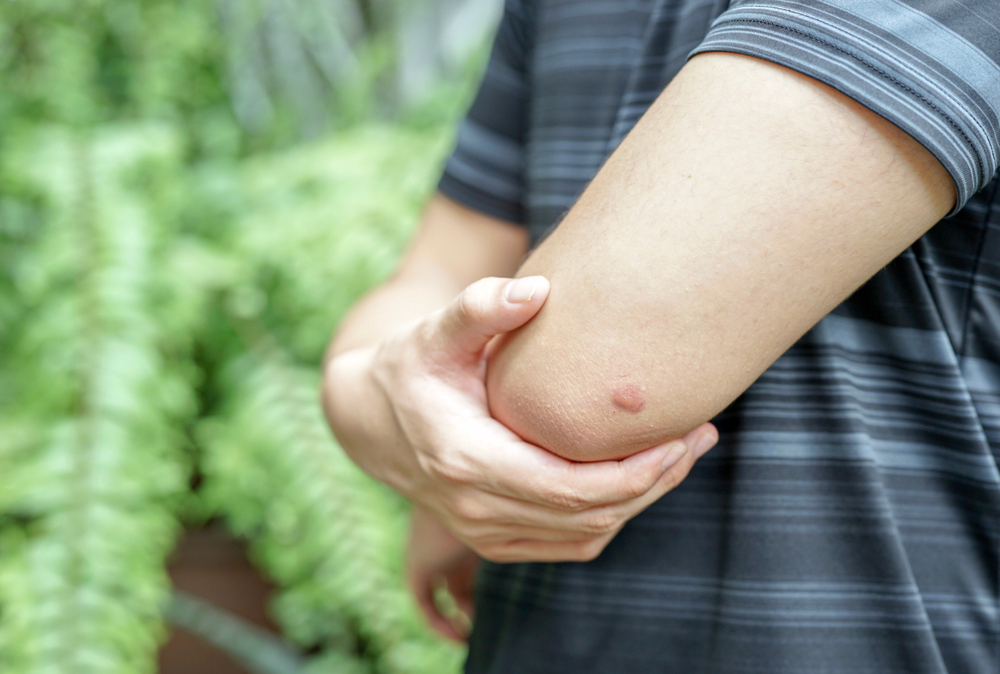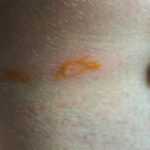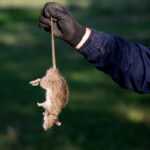Effective Brown Recluse Bite Treatment and Prevention Techniques
Brown recluse spider bites need immediate medical attention because they pose serious health risks to the victim. Your search has led you to this page because you need help recognizing bites, tracking their development, and finding proper treatment methods. This guide explains how to deal with brown recluse bites by showing you the first signs and complete treatment options for recovery
- Early detection of brown recluse spider bites depends on recognizing painless bites, which develop into redness and blistering before necrosis occurs when left untreated.
- The standard treatment plan for brown recluse bites includes symptomatic management alongside wound treatment, while severe cases may need skin grafts and hyperbaric oxygen therapy since there is no antivenom available.
- The main preventive methods to avoid brown recluse spider encounters include wearing gloves while outdoors, decluttering homes, and using professional pest control services.
Introduction to Brown Recluse Spiders
Brown recluse spiders (Loxosceles reclusa) are a type of venomous spider most commonly found in the southeastern and midwestern United States. Recognizable by the violin shaped marking on their back, these spiders are typically light brown to dark brown in color. Brown recluse spiders are not aggressive by nature and usually only bite when they feel threatened or trapped. Despite their reclusive habits, brown recluse spider bites can lead to a range of symptoms, from mild irritation to severe necrotic wounds that require medical attention. Understanding the appearance, behavior, and risks associated with brown recluse spiders is crucial for preventing spider bites and ensuring prompt, effective treatment if a bite occurs.
Habitat and Distribution
Brown recluse spiders prefer environments that are warm, dry, and undisturbed. Inside homes, they are often found hiding in cardboard boxes, behind furniture, in closets, attics, basements, and crawl spaces—anywhere that offers darkness and little human activity. Outdoors, brown recluse spiders seek shelter under rocks, within woodpiles, beneath bark, and in utility boxes. These recluse spiders are most prevalent in the southeastern and midwestern regions of the United States, but they can occasionally be found in other areas as well. Their tendency to hide in seldom-disturbed places means that people may not realize brown recluse spiders are present until a spider bite occurs.
Who is at Risk
While anyone can be bitten by a brown recluse spider, certain groups are more vulnerable to experiencing a severe reaction. Children, elderly individuals, and those with weakened immune systems or preexisting health conditions are at higher risk for complications from a brown recluse spider bite. People who work in construction, landscaping, or spend significant time in garages, sheds, or other areas where brown recluse spiders may live are also more likely to be bitten. Taking extra precautions in these environments can help reduce the risk of a serious spider bite.
Epidemiology of Brown Recluse Spider Bites
Although brown recluse spider bites are less common than other types of spider bites, they can still pose significant health risks. According to poison control data, there are an estimated 2,500 to 3,000 reported brown recluse spider bites each year in the United States. Most bites occur indoors, often when someone unknowingly disturbs a spider hiding in clothing, bedding, or storage boxes. The majority of brown recluse spider bites affect the arms, legs, or trunk, and most bites are reported in regions where brown recluse spiders are native. While most bites are mild, some can lead to serious complications, especially in vulnerable populations.
Initial Signs of a Brown Recluse Bite
The first indications of a brown recluse spider bite tend to be very subtle in their initial presentation. The bite itself is often painless, which makes it easy to overlook. A stinging sensation usually starts to develop during the first few hours after the bite as venom enters the skin. A burning sensation may also develop around the bite site within hours, which is another early symptom to watch for. This first symptom serves as an essential warning for both detection and appropriate medical treatment.
After several hours, the bite area displays noticeable signs visible to the human eye. Redness along with visible fang marks typically appear as the first noticeable symptoms. A red center may also appear at the bite site, which is a characteristic feature of brown recluse bites. These symptoms are not always easy to detect but indicate that a brown recluse spider has inflicted the bite. You should monitor the affected area closely whenever you notice any of these symptoms. Changes around the bite, such as increased redness or a burning sensation, should be closely observed.
Proper treatment at the right time prevents brown recluse bites from becoming more serious. The venom damages nearby tissue, resulting in major skin damage that produces necrotic wounds. Prompt detection and proper management of brown recluse bites remain essential to stop severe complications from developing.
The dark violin-shaped mark on the spider stands as the most important indicator that it is a brown recluse spider. Identifying these early symptoms at the onset of the bite is vital for proper management.
Progression of Symptoms
A brown recluse spider bite shows increasing signs of pain and discomfort as time advances. Victims typically develop itching together with pain of different intensity levels during the 2 to 8 hour period following the bite. Redness and blistering develop at the bite site and may intensify into intense pain and discomfort. When the spider bites, brown recluse venom is spider injected into the skin, and the venom injected can lead to progressive tissue damage.
A blister may appear at the bite location within several hours after the spider attack. The blister will eventually open to form an open sore with tissue damage developing near the bite area about one week post-attack. The area may develop skin necrosis and dead tissue as a result of the venom injected by the spider. Medical signs of brown recluse spider envenomation become evident when tissue affected by coagulative necrosis appears.
Monitor the bitten area for signs of infection development. Infection becomes evident when the bite area becomes more inflamed, shows drainage, or experiences major swelling. Significant swelling is uncommon except when the bite occurs on the face or feet. Get immediate medical help if you notice any symptoms that could lead to additional complications.
Severe Reactions and Systemic Effects
Local symptoms from brown recluse spider bites typically occur, but some people develop whole-body reactions that are severe. Systemic symptoms include fever alongside chills and rash across the body, revealing an extreme response to venomous bites. Joint pain and hemolytic anemia can also occur, especially in children, as part of these systemic reactions. In vulnerable individuals, such as children, the elderly, or those with underlying medical conditions, more severe symptoms and severe symptoms may develop, requiring urgent medical attention. Such symptoms demand urgent medical help because they present serious health risks.
Brown recluse spider venom contains toxic compounds that cause major harm to human bodies. The venom damages blood vessels while causing cell death and triggering inflammation. Severe venom exposure may result in hemolysis (red blood cell destruction), thrombocytopenia (low platelet count), and organ damage. Systemic effects prove particularly severe to children’s health.
Urgent medical help becomes essential whenever someone experiences extreme pain or signs of infection, together with systemic complications. Prompt treatment helps prevent severe reactions and systemic effects caused by brown recluse spider venom.
Identifying a Brown Recluse Spider
Recognizing brown recluse spiders helps prevent bites and enables timely treatment. The brown recluse spider reaches a body length of about 3/8 of an inch. A dark violin-patterned mark stands out on its light brown body as its main distinguishing trait. Brown recluses are often confused with other spiders, but their violin-shaped marking is distinctive.
The spider’s light-colored legs show no banding or stripe patterns, providing a clear distinction from other spider species. The abdomen displays colors ranging from cream to dark brown, with uniform pigmentation across its surface. Most spiders do not have the same uniform coloration or violin-shaped marking as brown recluses.
Brown recluse spiders primarily inhabit dark storage areas such as attics, basements, and garages, which function as typical habitats. Knowledge of their characteristics enables people to take protective steps and seek medical care after bites occur. The brown recluse’s bite is medically significant and should be distinguished from bites by other spiders.
Diagnosing a Brown Recluse Bite
Brown recluse spider bites present diagnostic challenges because their symptoms overlap with those of other medical conditions. Brown recluse bites can be mistaken for other conditions such as Lyme disease, which can also cause skin lesions that resemble spider bite wounds.
The cutaneous findings, systemic injury, and potential death are possible outcomes of brown recluse spider bites. However, many brown recluse bites are mild bites that heal without complications, typically resolving within days to weeks with minimal tissue damage. Understanding brown recluse spider venom and toxicity plays an essential role in successful treatment. Delayed treatment can produce severe consequences.
Common symptoms include:
- Malaise
- Nausea
- Headache
- Muscle pain (myalgias)
These symptoms can complicate diagnosis.
The medical condition resulting from brown recluse spider bites is known as loxoscelism or severe systemic syndrome. Doctors usually diagnose it through clinical examination by confirming spider bites or analyzing lesion characteristics. The bite requires continuous monitoring since ulceration takes 7–14 days.
The ‘NOT RECLUSE’ mnemonic helps medical professionals differentiate brown recluse bites from other bite types. Many brown recluse bites are misdiagnosed, so accurate identification is important. A brown recluse bite is usually more than 1 cm elevated, which helps identify it. Misdiagnosis can occur because methicillin-resistant staph aureus skin infections show similar symptoms.
Antibiotics are necessary only when patients display signs of cellulitis. Correct diagnosis and proper treatment are essential for successful management.
First Aid for Brown Recluse Bites
Swift first aid following a brown recluse spider bite determines the final outcome. Clean the bite area thoroughly with soap and water to prevent infection. Appropriate wound care accelerates healing and prevents complications.
Apply a cold compress or ice pack to reduce swelling and discomfort. When possible, elevate the affected limb to decrease swelling and minimize pain. Acetaminophen and NSAIDs help manage pain, while antihistamines reduce itching.
Contact poison control or seek medical help for severe bites. Prompt first aid stops worsening symptoms and avoids additional complications.
Medical Treatment Options
Medical treatment focuses on managing pain and treating tissue damage. Pain management depends on severity and may require NSAIDs or opioids. Patients with severe necrosis may need skin grafts to repair damaged skin.
Hyperbaric oxygen therapy helps patients recover from tissue damage by enhancing oxygen delivery to tissues, supporting healing. Currently, no specific antivenom is available for brown recluse spider bites in the United States. The main goal is to prevent complications and treat symptoms. Early medical treatment leads to better outcomes and lowers the risk of long-term damage.
Long-term Care and Recovery
Healing from a brown recluse spider bite can be lengthy, especially if necrosis occurs. Minor bites typically resolve within three weeks, while severe cases may require several months and surgical interventions. As the wound heals, dead skin may slough off and, if extensive, could require medical attention. Most brown recluse bites heal fully within a few months without complications.
After 4 to 6 weeks of therapy, delayed skin grafting may be necessary to repair damage. Superficial bites heal by secondary intention and may take several weeks. Patients should follow treatment plans closely and consult doctors if complications arise.
Visiting the emergency room may be necessary for severe reactions or signs of infection. Proper follow-up and long-term care help avoid lasting consequences.
Preventing Brown Recluse Bites
To reduce the chance of encountering brown recluse spiders, take preventive measures such as wearing gloves when working outdoors. Regular cleaning and decluttering reduce spider infestations. Brown recluse spiders live in undisturbed areas such as attics, basements, and even within wood framing and dead trees, making it important to inspect these locations.
Sticky traps placed near entry points effectively reduce spider presence indoors. Professional pest control experts use integrated pest management strategies to identify and manage spider populations. Many spiders, including brown recluses, can hitchhike indoors on items like plastic bags and boxes, so inspect and seal stored goods to prevent infestations.
Effective pest control decreases the risk of bites by reducing and monitoring spider numbers in and around homes. These steps help protect your home and family. Using a fly swatter is generally ineffective for controlling brown recluse spiders; integrated pest management is recommended for best results.
Deterrence and Education
Preventing brown recluse spider bites starts with making your home and workspace less inviting to these spiders. Seal cracks and crevices around doors, windows, and foundations to keep brown recluse spiders from entering. Remove clutter, especially cardboard boxes and piles of clothing, to eliminate hiding spots for recluse spiders. Sticky traps can be placed in corners and along walls to monitor and reduce spider populations indoors. When working in areas where brown recluse spiders may be present, wear long sleeves, long pants, and gloves to protect your skin from accidental bites. Education is a powerful tool—teaching family members, especially children, about the appearance of brown recluse spiders and the risks of spider bites can help everyone stay vigilant and safe. By combining deterrence strategies with awareness, you can greatly reduce the chances of being bitten by a brown recluse spider.
Importance of Professional Pest Control
Effective control of brown recluse spider infestations requires professional pest control services. Many companies offer specialized treatments that remove brown recluse spiders and their habitats.
Understanding and managing brown recluse spider bites is essential for safety and health. From first symptoms to spider identification and first aid, every step is vital to minimize venomous bite effects. Early medical intervention and proper treatment reduce severe complications and long-term damage.
Preventing encounters through regular cleaning and sticky traps is better than treating bites. Professional pest control services add extra protection to keep your home spider-free. Take action today to protect your home and family.
Frequently Asked Questions
What are the first signs of a brown recluse spider bite?
Brown recluse spider bites first manifest as painless stings, redness, and obvious fang marks. Symptoms progress to swelling and pain.
How can I identify a brown recluse spider?
Look for a light brown body with a dark violin-shaped marking on the back. Their legs are uniformly light in color, and the abdomen ranges from cream to dark brown.
What should I do if I suspect a brown recluse bite?
Clean the area with soap and water, apply a cold compress, elevate the limb, and take pain medications. Seek immediate medical care if symptoms worsen.
Are there any specific medical treatments for brown recluse bites?
Medical professionals use NSAIDs or opioids for pain relief. Severe cases may require skin grafts and hyperbaric oxygen therapy. Always consult a medical professional.
What actions should I take to prevent brown recluse spider bites?
Wear gloves during outdoor work, regularly clean and declutter spaces, and use sticky traps or professional pest control services to minimize encounters.





